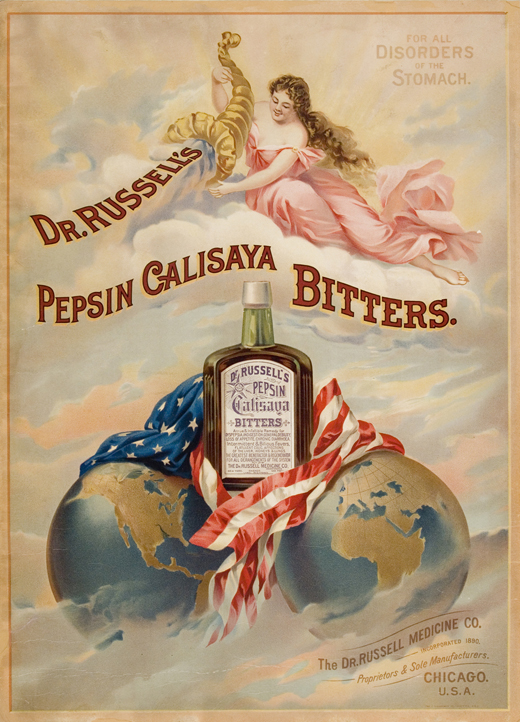Nature and Scope
Introduction
Popular Medicine in America documents the history of ‘popular’ remedies and treatments in nineteenth century America, through primary source materials drawn from the extensive collections at the Library Company of Philadelphia and the Philadelphia Museum of Art.
The material covers popular trends such as phrenology, herbal medicine and hydrotherapy, and documents the rise of widespread advertising by commercial manufacturers of medical aids.
We have selected material with a significant emphasis on ephemera and advertising, aimed at the ordinary man in the street rather than medical professionals, with the focus upon enabling him to treat himself and his family at home using an array of inventive methods and fashionable techniques. These popular practices were built upon the earlier traditions of folk medicine and materia medica as dispensed by apothecaries, and help to show the relationships and differences between traditional old-style medicine and newly emerging scientific methods.
Source Archives
All printed documents are fully text-searchable.
Library Company of Philadelphia
- Printed Books and Pamphlets – texts written to educate the general public, often by experienced practitioners who saw the need to freely disseminate their knowledge further. The earliest book in the resource is The Family Physician, and the House Apothecary by Gideon Harvey, published in 1676.
- Trade Cards – advertisements produced by commercial manufacturing companies to sell their medicinal products, including botanic remedies and medical devices. These documents are highly visual and showcase the wide variety of products on the market during this period all over America.
- Street and Anatomy Guides – memoranda, catalogues and factual pocket books on various health topics, many of which were aimed specifically at men and covered sexual issues.
- Ephemera – including receipts, billheads, invoices and sales documents from medical stores, warehouses and practitioners.
- Posters and Broadsides – illustrations, periodical covers, signs and other advertising media, many highly illustrated.
- Admission Cards – tickets, lists and other literature from medical lectures.
- Advertisements and Letters – mainly textual documents advertising medical services and products, and advocating certain treatments.
The Philadelphia Museum of Art
- Posters from the Ars Medica Collection, comprising a variety of sources relating to eighteenth and nineteenth century pharmacy and medicine.
A variety of secondary features provide further tools for teaching and research:
- A fully searchable visual gallery of illustrations, advertisements and posters
- Online exhibitions, showcasing some of the collection’s highlights
- Carefully selected external links to aid research
- An interactive chronology charting key dates in the history of popular medicine
- A glossary of medical terms
- Topical academic essays from leading scholars


